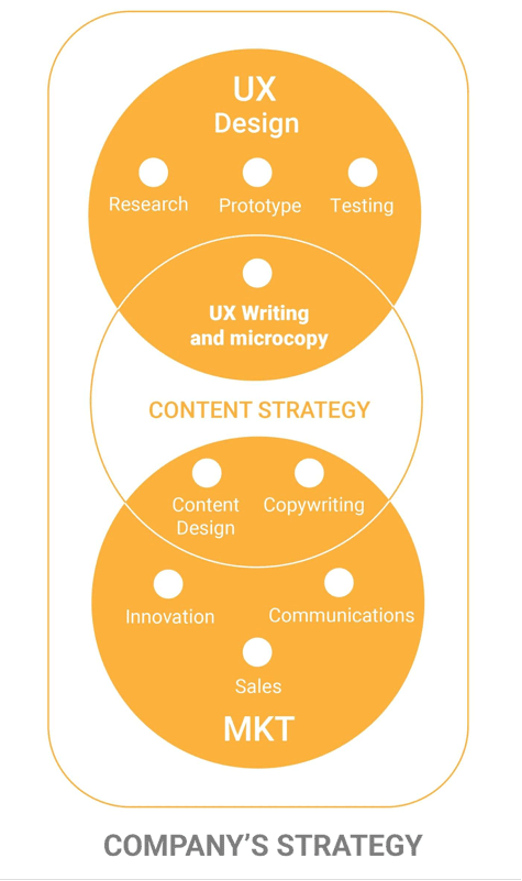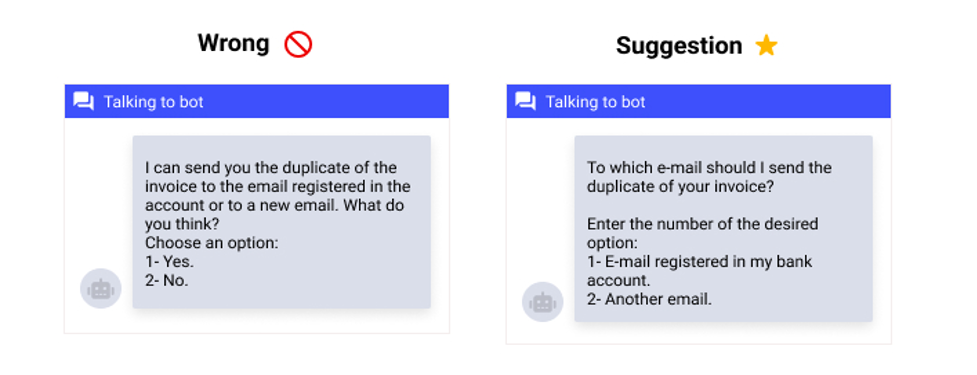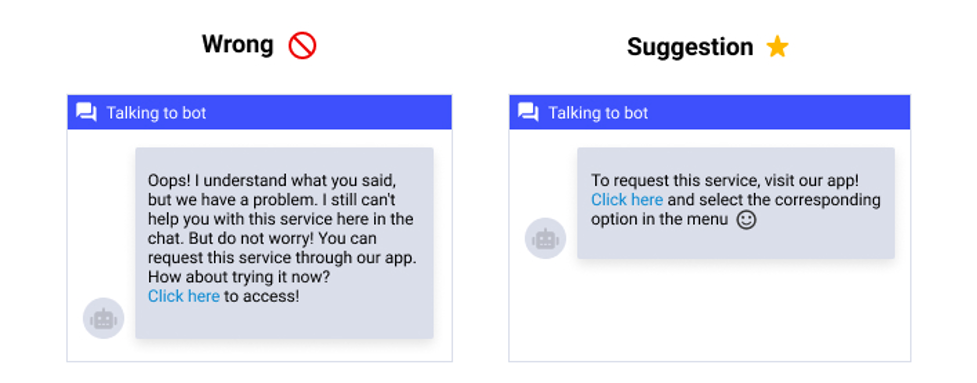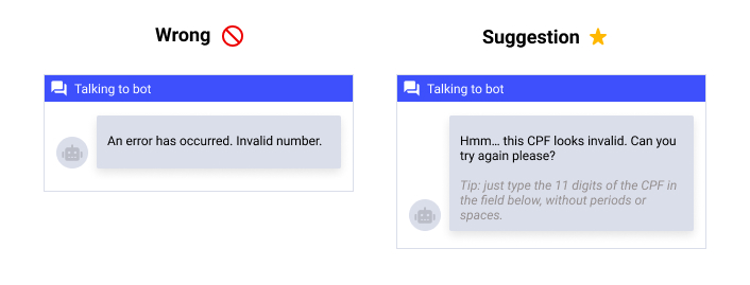
Good communication is the foundation for developing successful relationships between companies and their consumers. And to meet the great demand for communication, companies provide a lot of informative content and use several channels or software that automatically responds. Thus, a challenge arises, how to make the communication experience better and more humanized?
Today we are going to share some important concepts for those who are starting or need to create some content or chatbot dialogues.
Our goal is to explain what User Experience (UX) writing is and the good principles behind it.
Let’s go!
What is UX?
It is Design focused on the human being, considering what the user feels and does from the early stages of a project until the end. It includes mapping and analyzing everything that involves the user, all the experiences or feelings that a user can have with a product, system or service.
A designer plans the end-to-end interactions of the user for what is being created. For the UX process to be successful, several steps and techniques of alignment, research, ideation and testing can be used in order to reduce risks and provide a better experience for people when using a product, system or service.
All the discoveries of a UX Designer can be a great ally in the creation of the Brand and Content Strategy.
“If you think good design is expensive, you should look at the costs of bad design.”
– Ralf Speth, CEO, Jaguar Land Rover
What is UX Writing?
In simple terms: Content strategy.
“UX writing is the process of creating words and sentences in user experiences: titles, buttons, labels, instructions, descriptions, notifications, alerts, and controls that people see.”
-Torrey Podmajersky, UX Specialist
How to get started?
Do an Analysis Process: Look at text and think about what is good for the company and the user. Who is my user? Do I know who he is or do I think I know who he is? This process helps to define user persona(s), which guides how we should communicate.
It is important to think about these concepts so that it is possible to create a communication that is objective and clear. Do the words I’m using make sense to my user? Why are we using the correct words to address this topic?
 UX writing is a part of UX design – Image source: uxmatters.com
UX writing is a part of UX design – Image source: uxmatters.com
UX Writing is also writing aligned with the business and product strategy, and often leverages terminology used in other collaterals. This helps users comprehend and facilitates communication between the company and its consumers. Everyone will be speaking the same language.
Example: In a billing context, does the user understand billing the way my company understands billing? Does he understand debit and credit the way I understand debit and credit? Are the words and expressions I’m using familiar to the user?
Remember:
- Content writing is user-focused
- It should make communication crystal clear
- It should facilitate user decision making
- The choice of words is derived from the user: Writing is a consequence of UX research
Digital Writing Techniques
Doing a good job of writing varies based on the purpose, especially when considering the multiple formats common in digital media. We have several writing techniques, and each one will be used for a specific purpose.
- Copywriting – If your goal is to persuade and convince the end user, focusing on conversion (e.g.: Ads, advertising materials)
- Web Writing – If the objective is to inform, focusing on relevant information (e.g.: News, articles, reports, blog posts)
- Tech Writing – If the object is to technically instruct with documentation focusing on learning (e.g.: Technical documentation, user guides or manuals)
- UX Writing – If the objective is to promote a good user experience for the user when using applications, websites, buttons, among others, focusing on usability (e.g.: chatbots, interfaces, websites, apps, buttons)
You can apply various writing techniques depending on the purpose. To exemplify with some chatbot scenarios, when creating chatbots for sales, you may use copywriting elements to persuade the user to make a certain choice, while more informative chatbots would benefit from focusing on web writing that offers additional information like “learn more about our company”. For more instructive chatbots, such as for teaching you how to use something, applying tech writing techniques is the way to go.
Every technique has a connection. It’s possible and recommended to analyze and use different writing techniques in order to optimize your result. Whatever your goal is, always think about your users’ experience.
The Role of a UX Writer
Strategically the UX Writer has the best perspective to achieve two types of goals:
- The objectives of the organization that are responsible for offering the experience; and
- The objectives of the user when having the experience.
The UX Writer starts by identifying the purposes, opportunities, and constraints of a project. For this, the UX Writer needs to develop important skills:
- Empathy to put yourself in the user’s shoes, imagining how they will feel during the experience and what kind of experience they would like and need
- Creativity to think of various ways to handle complex concepts and content in ways that are easier for the user to understand
- Communication or skill with words, writing in a way that is fluid, not dull and difficult. In other words, create messages that make perfect sense to the end-user.
Chatbots: What are They?
 Image source: take.net
Image source: take.net
Chatbots are not just a “Support or Help” service. They can carry out e-commerce transactions, request various services, bring information and can even offer fun and humorous content.
Also known as conversational interfaces, chatbots are software that work inside messaging applications. There are three types of chatbots:
- Rule-based: Closed conversations (e.g., “yes and no” answers)
- Artificial intelligence-based: More open, interactive conversations
- Hybrids: Conversations that are a mix of a more guided-flow and rules-based, using artificial intelligence
Applying Principles of UX Writing to Chatbots
 Communicate simply and efficiently – Image source: Chalene Nuval
Communicate simply and efficiently – Image source: Chalene Nuval
Texts for UX Writing must have:
Clarity – Clearly informs and guides what the user should do
 In the wrong option, the alternatives are unclear and do not help the user to make the right decision. Always test your message by asking your audience if the message is clear before going into production.
In the wrong option, the alternatives are unclear and do not help the user to make the right decision. Always test your message by asking your audience if the message is clear before going into production.
Conciseness: Keep it short and quick to read

Very large texts generate a much greater cognitive process compared to smaller texts.
Consistency: Prevent confusion and keep cohesive in voice, tone, and vocabulary throughout the experience.

There is the process of teaching and passing on the company’s culture to the user. The lack of standards during an interaction with the user generates a break in expectations, as they need to adapt to constant changes and may struggle to know how to communicate with you in the right way.
Constructive: Keep in mind what message and purpose you want to communicate

It is important to always give the user guidance on what action he can take to proceed.
Conversational: The message should sound human and not robotic.

This type of interaction is cold and distant from the user. It does not create a relationship with the person. It is important to create an interaction with an empathetic humanized feeling.
Key Takeaways
UX Writing is the key to promote a good consumer experience helping users achieve their goals and develop a good relationship with the company. While creating content or creating Chatbot dialogs, always be clear, concise and conversational; follow the voice and tone of the brand, so you will be able to establish trust, empathy, and engagement with the user.
I hope this article has given you insights to start thinking on how you can create content that provides a great experience for your users.
References
- Strategic Writing for UX – Torrey Podmajerksy
- In Search of Good UX Writing Practices – Bruno Rodrigues
- Microcopy the Complete Guide – Kinneret Yafrah
- The 5 C’s of UX Writing – Charlene Nuval
Acknowledgment
This piece was written by Debora Soares with the contribution to Innovation Leaders at Encora.
About Encora
Fast-growing tech companies partner with Encora to outsource product development and drive growth. Contact us to learn more about our software engineering capabilities.




